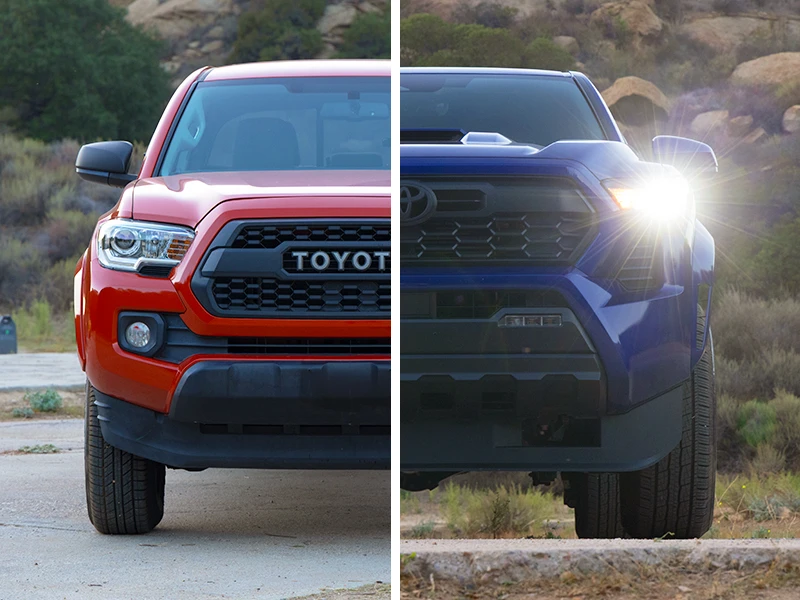They're everywhere these days, but how exactly does a CVT work?

With thousands of vehicles in our inventory, we’re here to help make car research easier for you. We’ve partnered with car-review experts from Edmunds to weigh in on what matters most, whether you’re looking to buy or sell a car.
***
What is a CVT?
Whether you're shopping for a new or used vehicle, you might notice that cars with continuously variable transmissions―CVTs for short―have become far more common over the last few years. They're a form of automatic transmission, so you don't have to shift your own gears as you would with a manual transmission. But, they aren't quite the same as the standard automatic transmission you might be used to.
A transmission's purpose is to transfer power from the engine to the wheels. Just like with a bicycle with different gears or speeds, a transmission has a range of gears (gear ratios) that work best for a variety of speeds. A manual transmission requires the driver to work a clutch and select the right gear, while an automatic handles the selection of gears on its own.
A CVT doesn't have gears in the traditional sense. There's no shifting, and that's a new experience for most drivers. CVTs prompted their fair share of doubt early on, whether it be because of the way they operate or out of concern for durability. Have no doubt, though, the CVT is here to stay, and automakers are installing CVTs more than ever before, on both AWD and 4WD vehicles.
How does a CVT work?
For a long time, automatic and manual transmissions offered only a handful of gears. Most vehicles over the last couple of decades had between four and six speeds. Now, eight-, nine-, and 10-speed transmissions are common across various vehicle platforms. From high-performance sports cars to workhorse pickup trucks, the speeds just keep climbing. So why are automakers adding all these gears?
Generally speaking, a transmission with more gears can better optimize engine speed depending on the driving conditions. Such a transmission can provide better acceleration in low gears and more efficiency up top in the higher gears. Manufacturers can then meet the government fuel efficiency standards while making even faster cars.
The CVT takes this concept even further. Between its bookend high- and low-gearing ratios, it can adjust to provide any ratio without the need to step on a pedal. This process creates a big advantage for CVT engineers. Because it's not shifting between fixed gear ratios like a regular automatic, a CVT can more quickly adapt and keep an engine at an optimum speed (rpm) for a given situation, such as quick acceleration or high fuel economy
A CVT's infinite variability of gearing, according to the Environmental Protection Agency (EPA), can boost a passenger car's fuel economy by about 4% compared to a regular automatic.
How did we get the CVT as we know it today?
An early version of the CVT was used in the first automobile, patented by Karl Benz in 1886, but it would be a long time before this kind of transmission became popular among mass-market vehicles. The return of the CVT coincided with an increased desire for fuel economy in the late 1980s, only showing up in a few automobiles.
In the last three decades, CVTs have become much more widespread thanks to significant improvements in materials such as high-strength belts, advanced hydraulics, high-speed sensors, and microprocessors. These new materials along with other innovations have made it possible to design small, relatively inexpensive CVTs.
What are the pros and cons of a CVT?
Part of the reason a CVT is so valuable is because it's simple. A CVT has fewer components compared than a standard automatic transmission. Instead of hundreds of parts you might find in a 10-speed automatic, typical CVT components include a high-strength belt, a hydraulically operated driving pulley, a mechanical torque-sensing pulley, and an array of microprocessors and sensors.
The design simplicity of a CVT means smooth operation, steady acceleration, and the ability to adapt to changing road conditions. But there are drawbacks, too.
Many CVTs give the driver an unsettling disconnect between the accelerator pedal and the engine's rpm. A driver might press on the accelerator only to find there's a pause before the engine noisily revs up. This elastic-like response is a result of the CVT allowing the engine to operate in its most efficient powerband, even when that band is higher or lower than the accelerator pedal's position might indicate.
Also, since you're dealing with a belt-driven CVT, there's often less torque than you'd expect from a traditional automatic. This can make the car feel slower―and in many cases, perform that way, too. CVTs are constantly improving, though. Some are now paired with torque converters, which increase responsiveness and improve drivability at low speeds, while others simulate fixed gear changes, giving them a more conventional feel.
Depending on the application, the benefits of a CVT can outweigh the disadvantages. With advances in CVT technology, alongside other driver-assist features, it's easy to see why manufacturers favor using them in their cars.
Should you buy a car with a CVT? The best way to know is to test drive it yourself and see if you like it. Reading expert and consumer reviews of a particular vehicle can also help in expanding your knowledge.




